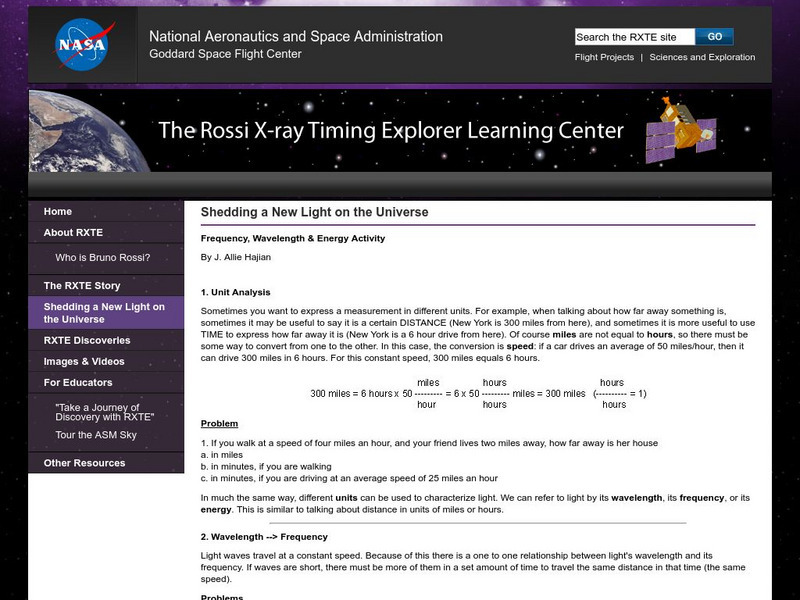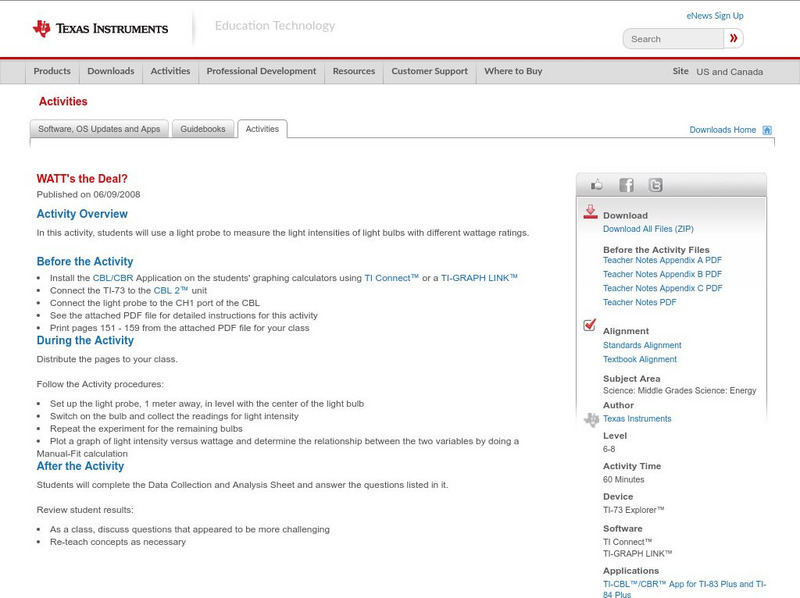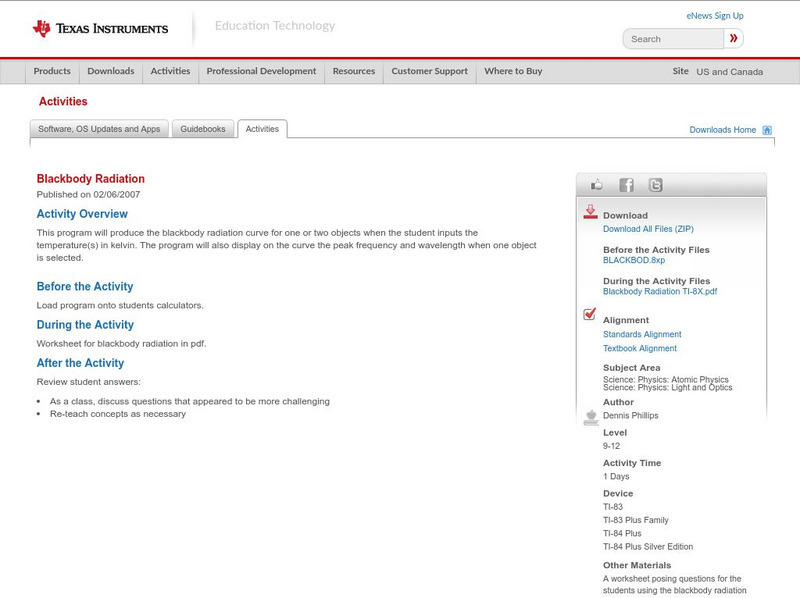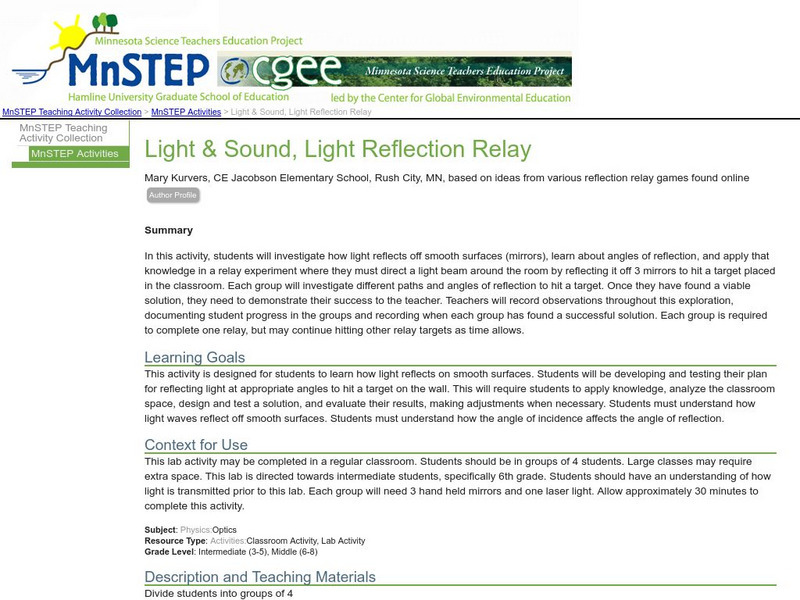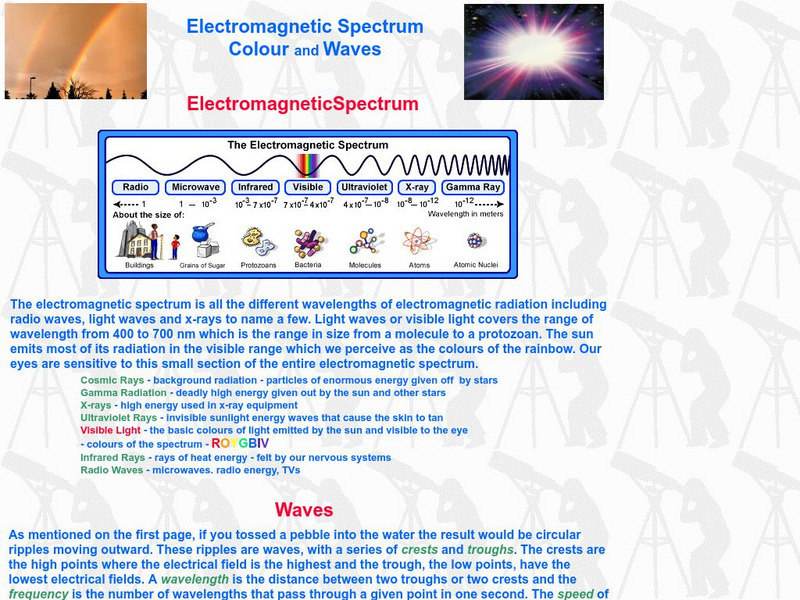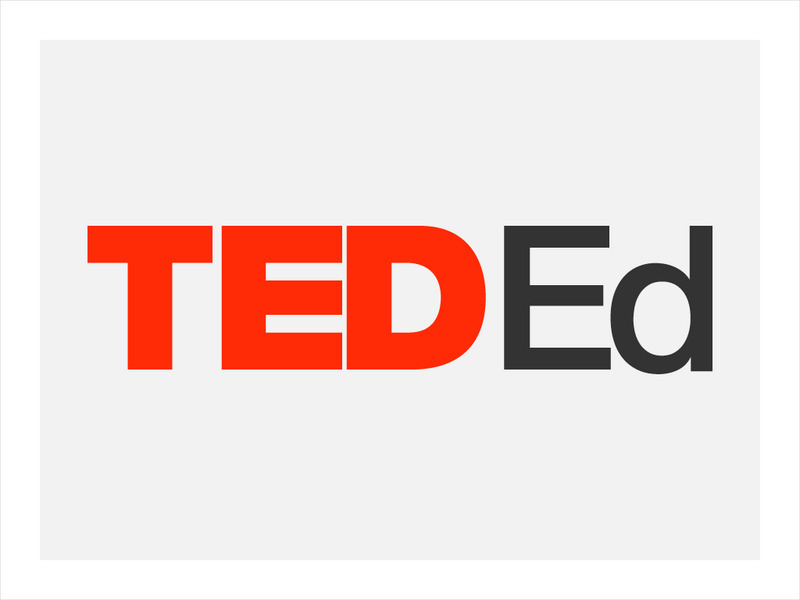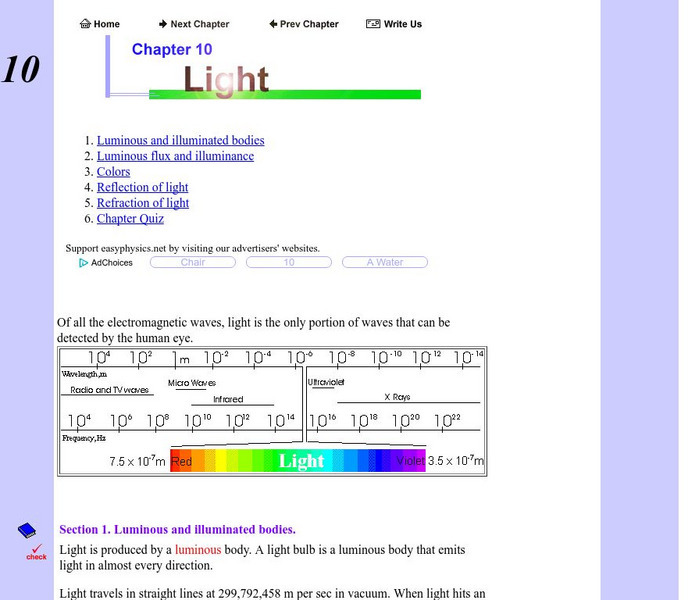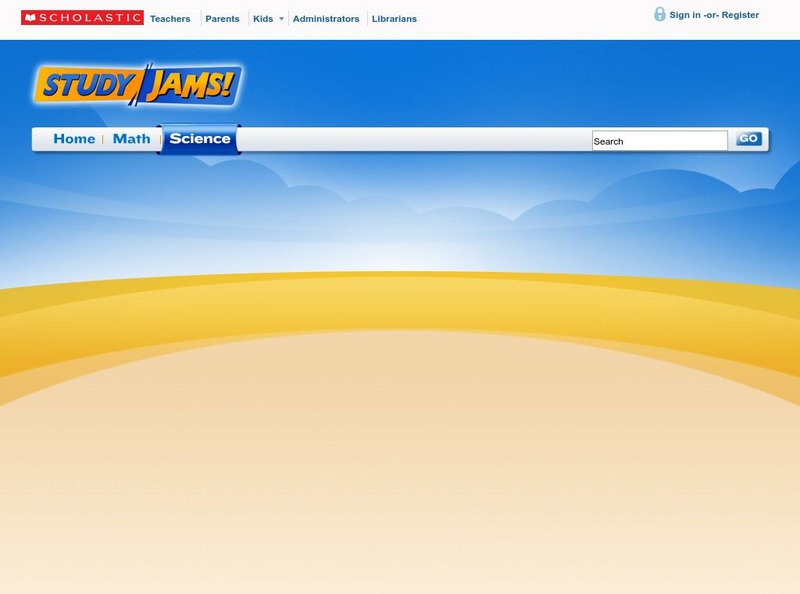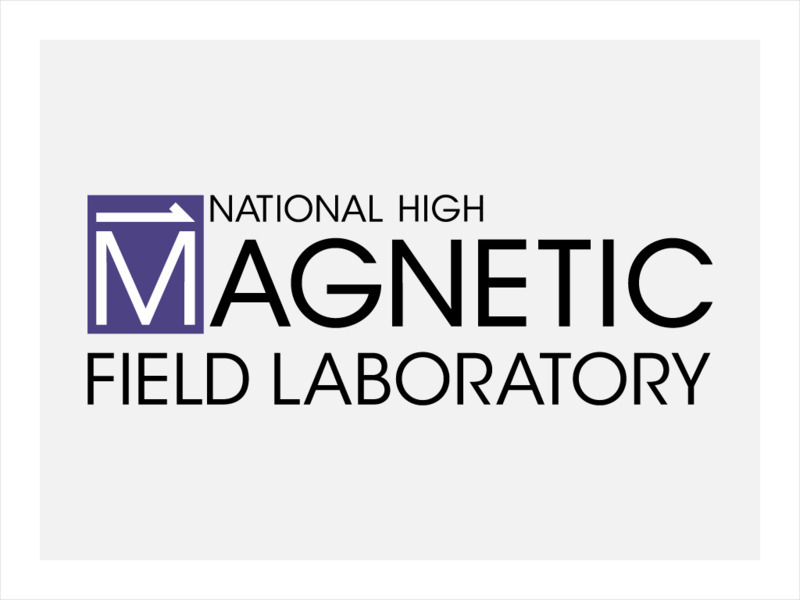NASA
Rxte Learning Center: Frequency, Wave Length, and Energy Activity
Resource focuses on the relationship between the frequency, wavelength and speed of light. Has a link to an interactive activity relating frequency, wavelength, and energy.
University of California
Uc Berkeley: How Do You Measure a Light Wavelength?
Cool science site tests your knowledge of light by exploring the question: "How do you measure a light wavelength?" Allows users to test themselves as well as provides additional activities on wavelength and amplitude.
Texas Instruments
Texas Instruments: Watt's the Deal?
In this activity, students can use a light probe to measure the light intensities of light bulbs with different wattage ratings.
Texas Instruments
Texas Instruments: Blackbody Radiation
This program will produce the blackbody radiation curve for one or two objects when the student inputs the temperature(s) in kelvin. The program will also display on the curve the peak frequency and wavelength when one object is selected.
Texas Instruments
Texas Instruments: Comparing Sunscreens
In this activity, students use the UVB Sensor to measure the amount of UVB light that passes through a thin film of sunscreen. They analyze the relationship between the SPF values and the intensity of UVB light transmitted by the sunscreen.
University of Colorado
University of Colorado: Physics 2000: Einstein's Legacy: Microwave Ovens
A series of pages that explain how microwave radiation is utilized by ovens to cook food. Includes several Java applets.
Science Education Resource Center at Carleton College
Serc: Light & Sound, Light Reflection Relay
For this exploration, students will investigate how light reflects off smooth surfaces, learn about angles of reflection, and apply that knowledge in a relay experiment.
Science Education Resource Center at Carleton College
Serc: Investigating Light: A Form of Energy You Can See
Learners will investigate how light is a form of energy that travels as waves away from the source. The basis for this lesson plan is taken from the Houghton Mifflin science curriculum. In the lesson plan experiments, students will...
Simon Fraser University
Chem1 Virtual Textbook: The Language of Light
Acting as a subtopic of the General Chemistry Virtual Textbook's section on Atoms and the Periodic Table, this site discusses light in relation to particles and waves. The difference between particles and waves is addressed along with...
Creative Science Centre
Creative Science Centre: Mini Light Beam Receiver
A very simple device to convert light into sound can be made by wiring a solar cell directly to headphones (or an earpiece). The solar cell converts light into electricity and the headphones convert electricity into sound. The limitation...
Museum of Science
The Atom's Family: Radiometer
Help Dracula find out about light waves by using a virtual radiometer.
My Science Site
Electromagnetic Spectrum: Colour and Waves
This resource provides information on the different wavelengths that make up the electromagnetic spectrum. Also contains information on waves and color.
Physics Classroom
The Physics Classroom: Light Waves and Color Table of Contents
Students explore color, vision, and two-point source interference. The tutorial consists of lessons and problems to check for understanding.
TED Talks
Ted: Ted Ed: What Is Color?
Colm Kelleher describes the physics behind colors- why the colors we see are related to the period of motion and the frequency of waves. [3:09]
Open Curriculum
Open Curriculum: Bounded Waves
To understand how bounded waves behave and how reflection of waves affects the wave components.
Other
Easyphysics: Chapter 10 Light Waves
Learners investigate light waves. Some topics examined are reflection of light, illuminance, and refraction of light. The resource includes example problems with solutions and a chapter quiz.
Other
Is the Speed of Light Constant?
Using a question and answer format, this page discusses the question: "Is the Speed of Light Constant?" Discusses some of the history and experiments performed with light and the conclusions drawn from those findings.
Other
Open School Bc: Sound and Light
The Sound and Light interactive investigates these two forms of energy. Students will enjoy exploring how sound and light are created, travel, and can be controlled.
South Carolina Educational Television
Etv: Nasa Online: Light: Scattering Light
An introduction to the concept of the visible light spectrum provided in an animated format.
Scholastic
Scholastic: Study Jams! Science: Energy, Light and Sound: Light
A video and a short quiz on the basic concepts and vocabulary for understanding light energy.
National High Magnetic Field Laboratory
Magnet Academy: Zeeman Effect 1896
Most of us have seen the rainbow-hued breakdown of the composition of light. Light is of course a form of energy. A magnetic field changes the behavior of light- a phenomenon known as the Zeeman effect.
Exploratorium
Exploratorium: Science Snacks: Moire Patterns
In this activity, students will use Moire patterns to demonstrate wave interference.
Exploratorium
Exploratorium: Soap Bubbles: Create Geometric Art With Soap Films
In this lesson plan students will learn about reflection of light using soap bubbles.
E-learning for Kids
E Learning for Kids: Science: Winery: Why Can We See Through Some Objects but Not Others?
Learn about the properties of materials in their interactions with light, including whether they are opaque, transparent, or translucent, and which of these produce shadows.


